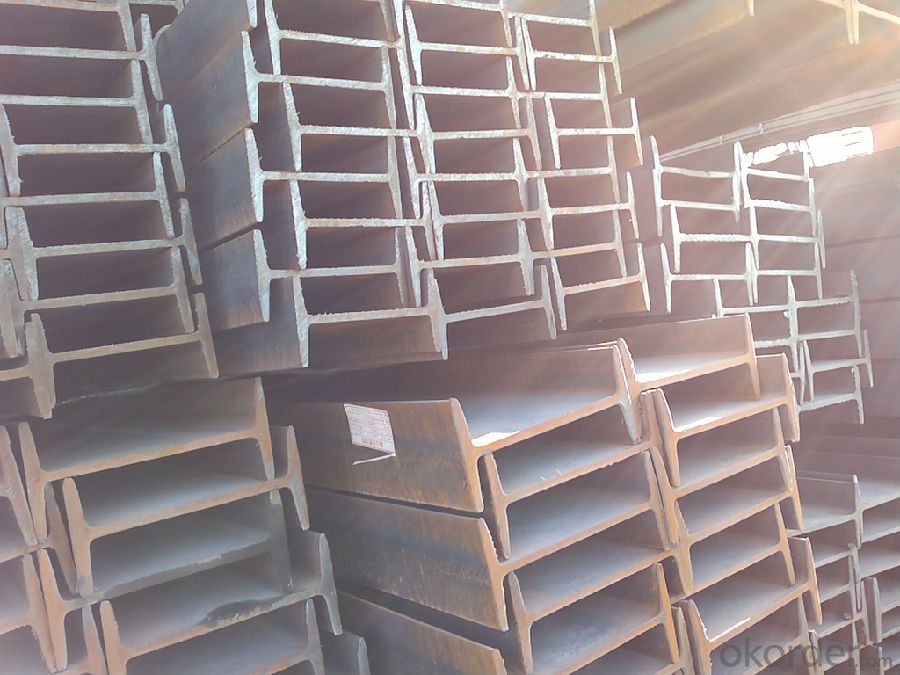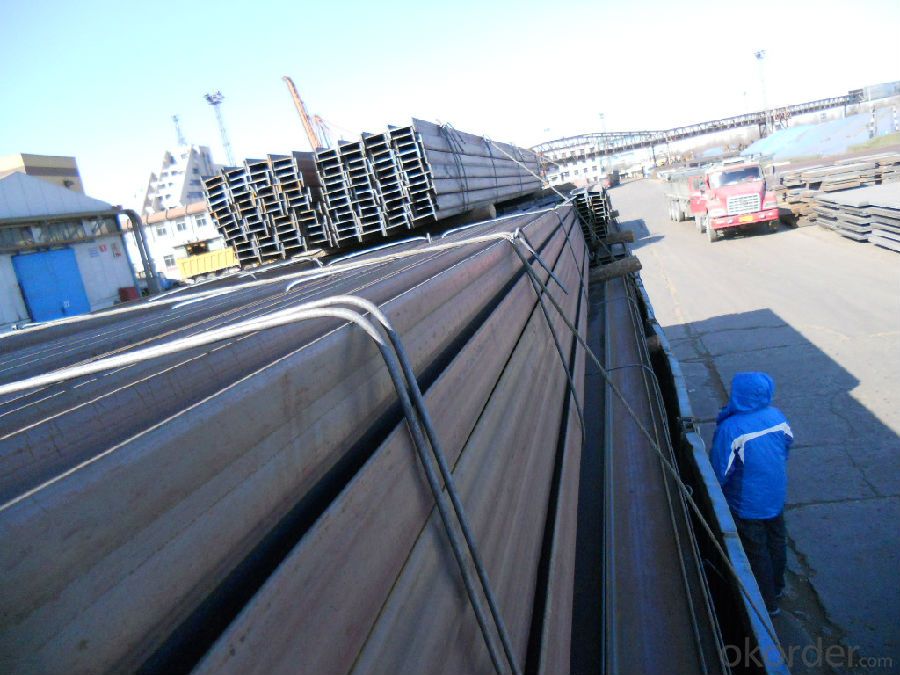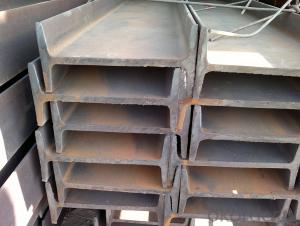European Standard IPE80 with High Quality
- Loading Port:
- Tianjin
- Payment Terms:
- TT OR LC
- Min Order Qty:
- 25 m.t
- Supply Capability:
- 15000 m.t/month
OKorder Service Pledge
OKorder Financial Service
You Might Also Like
Product Description of European Standard IPE80 with High Quality:
Specifications of European Standard IPE80 with High Quality:
1.Standard: EN10025
2.Material: S235JR or Equivalent
3.Length: 6m, 12m
4. Size:
Size (mm) | Mass (kg/m) |
| 80*46*3.8 | 6.00 |
Usage & Applications of European Standard IPE80 with High Quality:
Commercial building structure;
Pre-engineered buildings;
Machinery support structures;
Prefabricated structure;
Medium scale bridges.
Packaging & Delivery of European Standard IPE80 with High Quality:
1. Transportation: the goods are delivered by truck from mill to loading port, the maximum quantity can be loaded is around 40MTs by each truck. If the order quantity cannot reach the full truck loaded, the transportation cost per ton will be little higher than full load.
2. With bundles and load in 20 feet/40 feet container, or by bulk cargo, also we could do as customer's request.
3. Marks:
Color mark: There will be color marking on both end of the bundle for the cargo delivered by bulk vessel. That makes it easily to distinguish at the destination port.
Tag mark: There will be tag mark tied up on the bundles. The information usually including supplier logo and name, product name, made in China, shipping marks and other information request by the customer.
If loading by container the marking is not needed, but we will prepare it as customer's request.
FAQ:
We have organized several common questions for our clients, may help you sincerely:
1. How to inspect the quality?
We have a professional inspection group which belongs to our company. We resolutely put an end to unqualified products flowing into the market. At the same time, we will provide necessary follow-up service assurance.
We have established the international advanced quality management system,every link from raw material to final product we have strict quality test;We resolutely put an end to unqualified products flowing into the market. At the same time, we will provide necessary follow-up service assurance.
2. Is there any advantage about this kind of product?
Steel I beam bar IPE has a reduced capacity in the transverse direction, and is also inefficient in carrying torsion, for which hollow structural sections are often preferred.
Images of European Standard IPE80 with High Quality:


*If you would like to get our price, please inform us the size, standard/material and quantity. Thank you very much for your attention.
- Q:What are the safety considerations when working with steel I-beams?
- When working with steel I-beams, safety considerations include ensuring proper lifting techniques and equipment are used to prevent accidents or injuries, wearing appropriate personal protective equipment such as gloves and safety goggles, inspecting the beams for any defects or damage before use, securing the beams properly to prevent them from falling or shifting during installation or transportation, and following proper procedures for cutting or welding steel beams to prevent fire hazards. Additionally, it is important to be aware of the weight and size of the beams to avoid overexertion or strain while handling them.
- Q:What is the difference between the main keel and the angle steel and the channel steel?
- The boat in the boat, the boat is keel or load-bearing structure is the most important. It's at the bottom of the ship. On the keel, there is reinforcement across the ship's ribs. The bow and stern keel off the bow post. The keel is usually the first one to be part of the hull construction. The keel laying is the most important event in the shipbuilding process.
- Q:Can steel I-beams be used for temporary support during renovations or repairs?
- Yes, steel I-beams can be used for temporary support during renovations or repairs. Their strong and sturdy construction makes them suitable for providing temporary structural support while work is being done on a building.
- Q:What are the different types of steel I-beams available?
- There are several different types of steel I-beams available, including standard I-beams, wide flange beams, and H-beams. Standard I-beams have a relatively narrow shape and are commonly used in construction projects. Wide flange beams have a wider profile and offer greater strength and stability. H-beams have a wider flange and are often used in heavy-duty applications such as bridges and skyscrapers.
- Q:What span is the maximum span for I-beam?
- Steel beams as beams, the maximum span should not exceed 7 meters, if the span is now large, the bottom must be propped up with pillars.
- Q:Are there any limitations to the use of steel I-beams in construction?
- Yes, there are some limitations to the use of steel I-beams in construction. One limitation is their weight. Steel I-beams are typically heavy, which makes them more challenging to transport and install. This can increase the cost and complexity of construction projects, especially in areas with difficult access or limited resources for heavy lifting equipment. Another limitation is the potential for corrosion. If steel I-beams are not properly protected, they can rust and weaken over time. This is particularly an issue in environments with high humidity, saltwater exposure, or chemical pollutants. Regular maintenance and protective coatings are necessary to prevent corrosion and ensure the longevity of the I-beams. Additionally, steel I-beams have limitations in terms of their span length. The longer the span, the more the beams tend to deflect under load, which can compromise the structural integrity and stability of the building. In such cases, additional supports or alternative structural solutions may be required to overcome this limitation. Moreover, steel I-beams have limited fire resistance. When exposed to high temperatures, steel can lose its strength and structural integrity. Fire protection measures, such as fire-resistant coatings or the addition of fireproofing materials, are necessary to mitigate this limitation and ensure the safety of the building occupants. Lastly, steel I-beams are susceptible to thermal expansion and contraction. When exposed to extreme temperature variations, such as in regions with hot summers and cold winters, the steel can expand and contract, potentially causing structural issues. Proper expansion joints and design considerations must be implemented to accommodate these thermal movements. Despite these limitations, steel I-beams remain widely used in construction due to their strength, durability, and cost-effectiveness. However, it is essential to consider these limitations and address them appropriately in the design and construction process to ensure the safety and longevity of the structure.
- Q:12 cm GB steel I-beam 5 meters long, how much weight can loft?
- I-beam is also called steel girder (English name Universal Beam). It is a strip of steel with an I-shaped section. I-beam is divided into ordinary I-beam and light I-beam, H steel three. It is a section steel whose shape is trough.
- Q:Is outside building protection single row bent with cantilever steel instead of channel steel?
- Construction of single door rack erection of cantilever I-beam steel can not be used instead of steel, because the provisions of article 6.10.2 JGJ130-2011 "construction of steel tubular scaffold safety technical specifications" cantilever beam application of biaxial symmetry,...... steel beams shall not be less than 160mm. Therefore, the channel shall not be used, the cross section is asymmetrical, and the cantilever bent, the cross section is more likely to be unstable.
- Q:How do steel I-beams compare to composite beams in terms of cost and performance?
- Steel I-beams and composite beams have distinct differences in terms of cost and performance. In terms of cost, steel I-beams are generally more affordable compared to composite beams. Steel is a widely available and cost-effective material, making it a popular choice for structural applications. On the other hand, composite beams, which are typically made of a combination of materials such as steel, concrete, and fiber-reinforced polymers, can be more expensive due to the additional complexity and materials involved in their construction. In terms of performance, both steel I-beams and composite beams have their own advantages and disadvantages. Steel I-beams are known for their high strength and stiffness, making them suitable for heavy load-bearing applications. They have a proven track record of reliability and can withstand extreme conditions such as earthquakes and hurricanes. However, steel beams are susceptible to corrosion over time, which can affect their long-term durability and maintenance costs. On the other hand, composite beams offer a unique combination of properties that can enhance performance in certain applications. The use of different materials allows composite beams to optimize strength, stiffness, and weight, resulting in a higher strength-to-weight ratio compared to steel beams. This makes composite beams particularly advantageous in applications where weight reduction is crucial, such as aerospace or automotive industries. Additionally, composite beams have better resistance to corrosion and can provide improved fatigue and impact resistance compared to steel beams. In conclusion, steel I-beams are generally more cost-effective compared to composite beams. However, the choice between the two depends on specific project requirements and considerations. Steel I-beams are suitable for applications that require high strength and stiffness at a lower cost. On the other hand, composite beams offer unique performance advantages, such as high strength-to-weight ratio and corrosion resistance, making them ideal for applications that prioritize weight reduction and durability.
- Q:Can steel I-beams be used for military structures?
- Yes, steel I-beams can be used for military structures. They are commonly used in the construction of military buildings, hangars, bridges, bunkers, and other infrastructure due to their strength, durability, and load-bearing capabilities.
1. Manufacturer Overview |
|
|---|---|
| Location | |
| Year Established | |
| Annual Output Value | |
| Main Markets | |
| Company Certifications | |
2. Manufacturer Certificates |
|
|---|---|
| a) Certification Name | |
| Range | |
| Reference | |
| Validity Period | |
3. Manufacturer Capability |
|
|---|---|
| a)Trade Capacity | |
| Nearest Port | |
| Export Percentage | |
| No.of Employees in Trade Department | |
| Language Spoken: | |
| b)Factory Information | |
| Factory Size: | |
| No. of Production Lines | |
| Contract Manufacturing | |
| Product Price Range | |
Send your message to us
European Standard IPE80 with High Quality
- Loading Port:
- Tianjin
- Payment Terms:
- TT OR LC
- Min Order Qty:
- 25 m.t
- Supply Capability:
- 15000 m.t/month
OKorder Service Pledge
OKorder Financial Service
Similar products
New products
Hot products
Related keywords




























